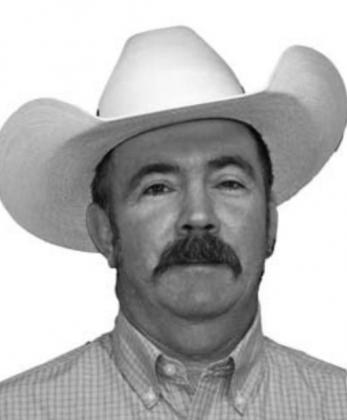June Bug Invasion
Take cover, run for the hills, the annual June Bug invasion has hit Comanche County. This is the time of year, if you walk by a post oak tree in late evening or after dark, it may seem alive with a constant buzz and trembling ground or if you are driving down a county road and it looks like it is raining June bugs. Perhaps you have been leaving your windows up at night and hear the constant barrage of June bugs hitting your screen. These are all obvious indications that the June bugs have come for you. Actually, the June bug itself seldom causes any real economic damage but is just an irritant. You cannot do much to treat for the bug, but the grubs are what you really want to treat as they can cause severe damage to your lawngrass. We are still a couple of months away from the best time to treat for the grubs. However, since I have been getting so many questions about the June bugs, I figured I would go ahead and cover it now.
The very common Junebug found in Texas is the adult stage of the white grub. There are over 100 varieties of May or June beetles in Texas and very few seldom cause a major economic loss to crops and horticulture plants but some can be very damaging to turfgrass. The white grub, also known as a grubworm feeds on the underground roots of plants such as turfgrass. These damaged areas show up in the lawn as low vigor areas, they may turn yellow or brown and weeds may tend to move into the turf taking over the weakened area. If the grubs have caused major damage to the turfgrass you can lift the grass by hand and roll it up like a rug in the house. It is easily mistaken for Take-All-Patch a turfgrass disease. Take-All-Patch roots will appear rotted, whereas grub damaged turf will usually be absent of roots. You should also be able to find grubs if this is the issue.
There are two major grubs that we should be concerned with in this part of Texas related to turfgrass management. They are the June beetle and the Southern Masked Chafer. Most warm season grasses are attacked by both grubs and feeding can begin as early as June and last through October.
White grub damage looks very similar to Take-All-Root-Rot with weakened, irregular patterns in the lawns. However, you can tell it is grub damage when the turf can be easily pulled from the soil because of the damaged root system. To determine if you need to treat grubs take a 1-foot square plug from the lawn (every 1000 ft) and make sure to include areas where the damaged and healthy lawn join. Dig down 3 inches or so and count the number of grubs in that 1 ft x 1 ft area. If you find 4 or more grubs per square foot you need to treat the lawn.
Another good indication you have grubs is if you have moles. Moles are the pesky underground critters that leave tunnels in your yard. Moles eat grubs and other underground insects, not plant roots. While they do not eat plant roots, their tunneling throughout the yard can be very damaging to your turf. Gophers on the other hand leave mounds on top of the ground rather than the tunnels and they do eat roots. You can rid yourself of gophers with approved gopher baits made of grain and a rodenticide, but these will not work on moles as they do not eat plant material. Moles must be trapped to get rid of them, or if you get rid of your grubs you will not have a food source for the moles.
Non-chemical grub control methods include the beneficial nematodes nematods Steinernema and Heterorhabditis which can be mixed with water and applied to the lawns using a hose end sprayer. Some research shows that under good conditions they have reduced the population by 50%. The microbial pesticide, Bacillus popilliae is recommended for white grub in some areas of the United States but has not shown to be effective against Texas white grub. The last nonchemical control and perhaps the most humorous is using spiked sandals and repeatedly walking over the damaged area. Research has shown that in some cases it has reduced the population by 50%?
Chemical control can be utilized for white grub, but timing is very critical. The chemicals used today are less toxic to beneficial arthropods and earthworms, however, that means they will need to be applied earlier to control the grub. Grubs need to be less than 1/2 inch when insecticides are applied. Products containing imidacloprid and halofenozide are some of the more common products. You will find those names listed on the product bag under active ingredient. If you are already seeing damage in your lawn from larger grubs you can use products containing carbaryl or trichlorfon. Always follow the label directions on the product that you purchase to ensure you get the best control possible. You may need to treat a second time in a few weeks. It is also important to remember that the insecticides must come in contact with the soil. Heavy thatch layers in your turf can cause the insecticides to bind to the thatch and cause the insecticide to not reach the soil level.
It is important to irrigate before and after the pesticide application. Applying ¼ to ½ “the day before application will encourage the grubs to come closer to the surface and it will prepare the soil for better pesticide penetration. Another ¼ to ½ “will be required post application to move the treatment through the thatch layer and into the root zone where the grubs feed. For our area, the best time to apply a chemical treatment for grubs is mid-July.

